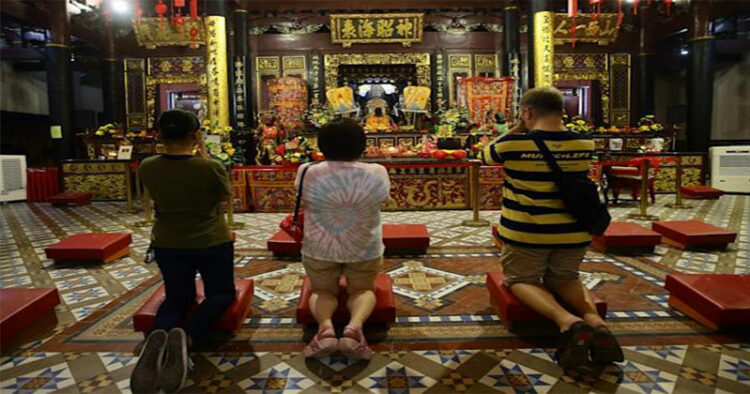The Peoples Republic of China (PRC) has witnessed a recent surge in number of people coming to temples. Initially, reserved for the elderly and senior citizens, but now, they have become a popular spot for the younger generation.
In the past, they were a rare and niche tourist destination, but recently are attracting a greater number of visitors than ever.
According to data from relevant platforms, almost 50 per cent of people born in the 1990’s and 2000s have booked tickets for temple attractions since February.
This is because Chinese Temples (especially temples in Beijing) have a quiet and artistic atmosphere which provides a perfect backdrop for creative coffee shops. This has attracted a large number of younger generation and even bloggers.
Apart from the coffee shops, the younger generation also purchases Buddhist Souvenirs, dress up in traditional Chinese dress, ask good fortune and take photos in front of red walls.
Along with their picturesque appeal, temples in Beijing have attracted the youth through cultural arts and crafts. The Baita Temple recently introduced a canvas bag that features the map of Beijing’s Third Ring Road.
Another temple in Wanshou has also in traduced canvas bags that draw inspiration from temple’s ancient architecture using warm pink and cool green hues.
The rise in the number of visitors to the temples is linked to the ‘anxiety’ among young people. According to a Chinese internet saying, “if you want to know what young people need the most right now, just visit a temple.”
For many young people, temples provide them a welcoming respite from the pressures of the modern life, particularly achieving academic and professional success. Temples have become a peaceful haven where people can escape the hustle and bustle of daily life and find solace in the quiet contemplation of spiritual matters.
The desire for ceremonial objects is another reason why younger people flock to temples.
The Ceremonial objects have surpassed souvenirs which is evident from the fact that young people line up for hours for getting their hands on ancient emperors’ bracelets. However, most of them are out of stock. This leaves frequent temple visitors to leave empty handed.
Yonghegong is a place of attraction and a thriving hotspot for bracelets. These are crafted by incense ash porcelain and ash-glazed bracelets made up of temple’s own incense burner ash. They feature in variety of sizes and shapes- basic models, macaron colour series, half sugar glaze series.
Every new bracelet at Yonghegong always draws a crowd of eager young people. Buying bracelets from this place is a Herculean task. According to an exasperated visitor, “you have to elbow your way through the crowd to gain a glimpse of the glass cabinet and shout for making yourself heard.”
Nevertheless, young people remain steadfast in their belief that acquiring an incense ash porcelain glass bracelet made from the ash of temple incense burner and having blessed by a master, completes the entire Buddhist Worship experience. For them, the effort is well worth it.
In the Chinese Culture, seeking the guidance of the Buddha is preferable to seek advice from others and that deceiving others is inferior than deceiving Buddha. As a result of which, young people are increasingly turning to monks and Buddhists in temples as trusted confidants.
Irrespective of whether their prayers are answered or unanswered, these young seekers of truth and wisdom find solace in spiritual support that they receive and take comfort in the belief that good luck awaits them.
Thus, temples have become a sanctuary where people can seek refuge from pressures of modern life and find a sense of peace and purpose.



















Comments